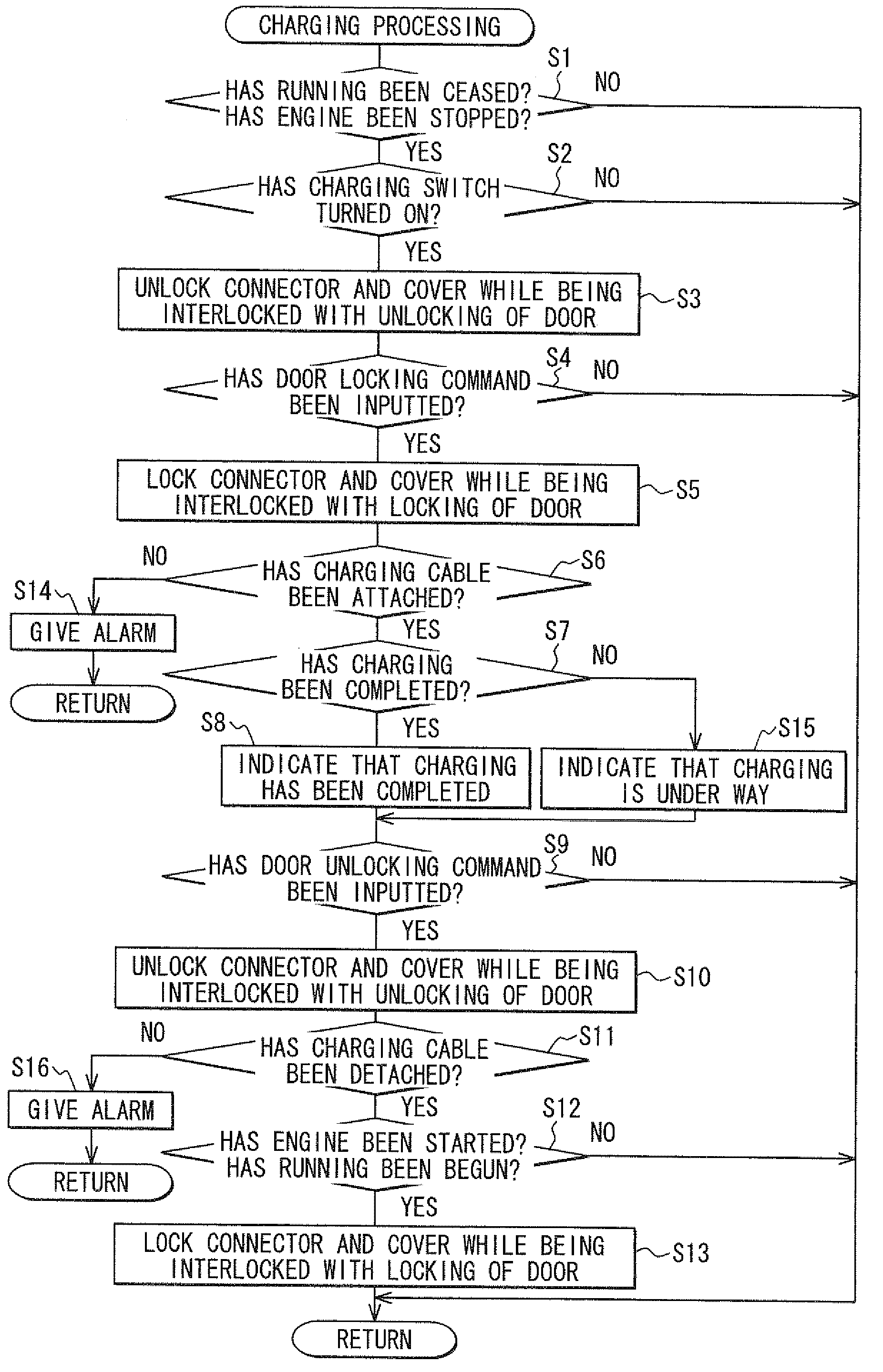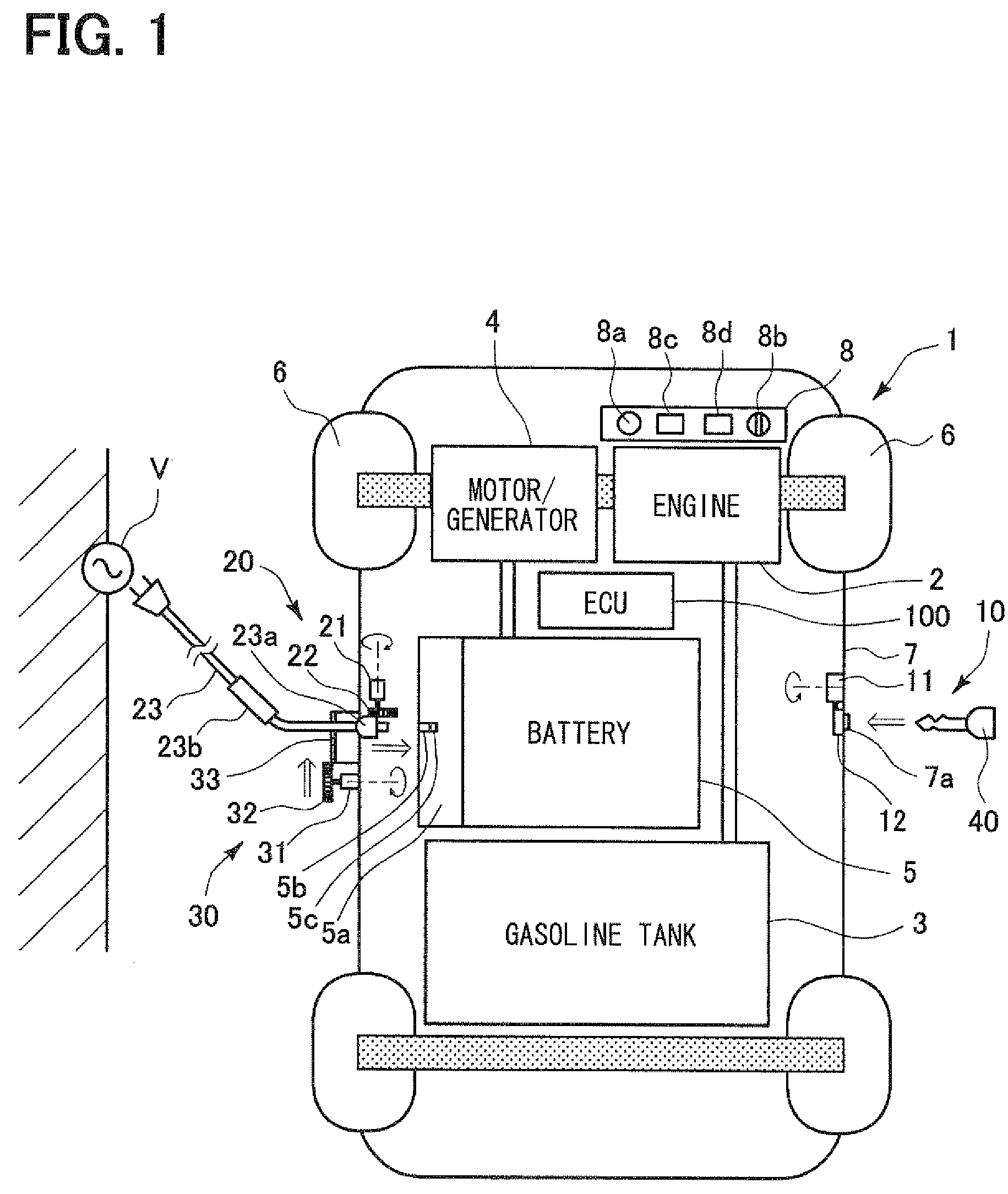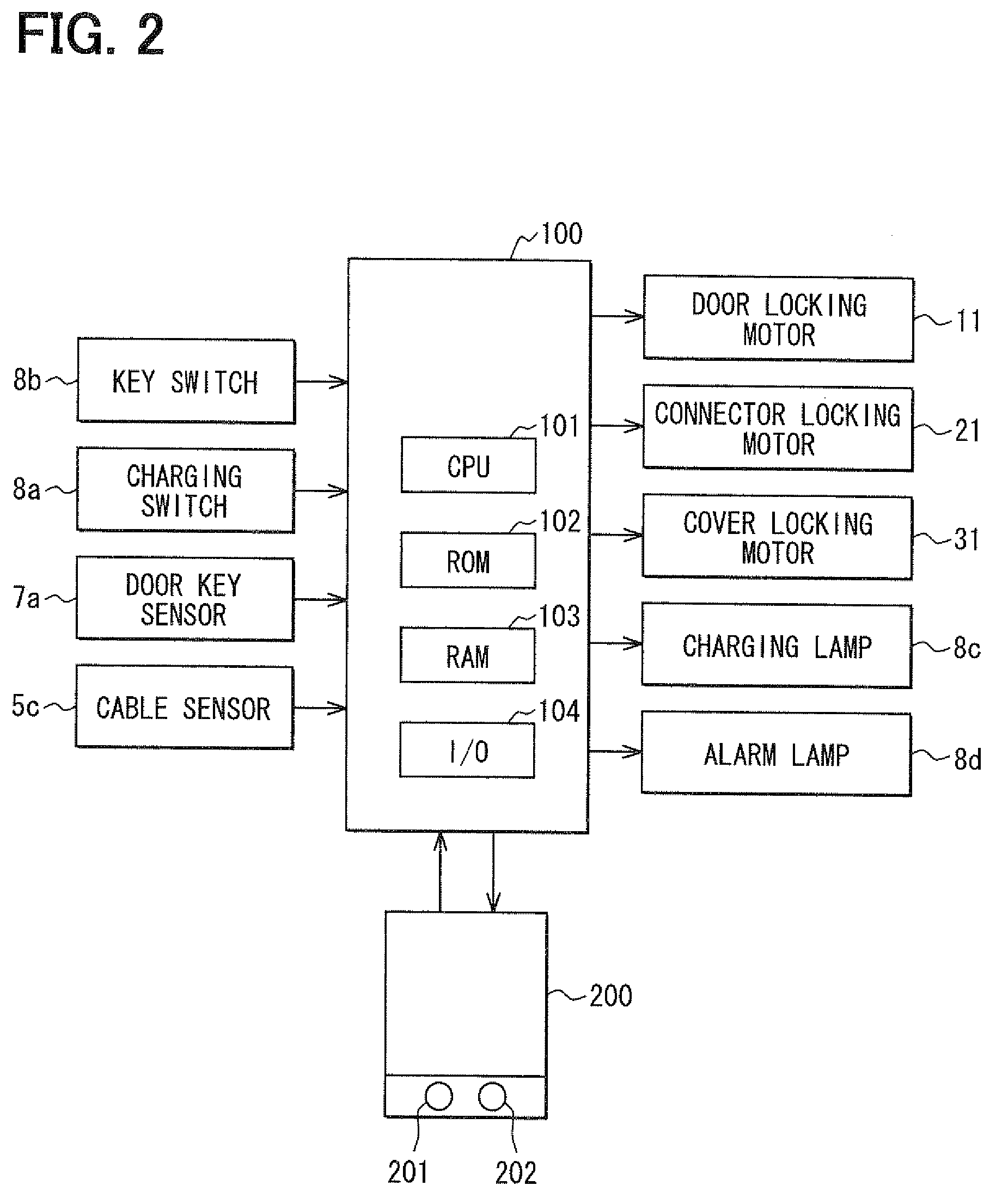Charging system for vehicles
a charging system and vehicle technology, applied in the direction of driver input parameters, electric devices, driver interactions, etc., can solve the problems of complex manipulation of owners or occupants of vehicles, and incur an extra cos
- Summary
- Abstract
- Description
- Claims
- Application Information
AI Technical Summary
Benefits of technology
Problems solved by technology
Method used
Image
Examples
first embodiment
[0034]Embodiments of the invention will be described below with reference to examples shown in the drawings. FIG. 1 shows an example of a plug-in hybrid vehicle (PHV) including a charging system in accordance with an embodiment. The PHV 1 shown in FIG. 1 can use an onboard battery 5 as a source of running power for driving wheels 6. In other words, when the PHV 1 is started or run at a high speed, a fuel in a tank 3, that is, gasoline is burned mainly within an engine 2 in order to rotate the driving wheels 6. At such a time, a motor / generator 4 functions as a generator using the rotary energy of the engine 2 so as to charge the battery 5. On the other hand, when the PHV is run at a low speed in an urban area or the like, the motor / generator 4 functions as a motor using the battery 5 as an energy source. Therefore, the PHV 1 is run mainly as an electric motorcar.
[0035]The PHV 1 includes a door locking mechanism 10, and a connector locking mechanism 20 and a cover locking mechanism 3...
second embodiment
[0053]FIG. 4A and FIG. 4B are flowcharts describing other examples of charging processing and presenting modified parts of the charging processing described in FIG. 3. In FIG. 4A, it is determined whether the door locking command, that is, the door locking signal sent from the key 40 or door key sensor 7a has been inputted for the first time at S41. If the door locking signal has been inputted for the first time, corresponding to YES at S41, the door locking motor 11 is driven in order to lock the door locking mechanism 10 alone at S51. Thereafter, it is determined whether the door locking command has been inputted for the second time, that is, the door locking signal sent from the key 40 or door key sensor 7a, at S42. If the door locking signal has been inputted for the second time, corresponding to YES at S42, the connector motor 21 and cover motor 32 are driven at S52 in order to lock the connector locking mechanism 20 and cover locking mechanism 30 in the same manner as when the...
PUM
 Login to View More
Login to View More Abstract
Description
Claims
Application Information
 Login to View More
Login to View More - R&D
- Intellectual Property
- Life Sciences
- Materials
- Tech Scout
- Unparalleled Data Quality
- Higher Quality Content
- 60% Fewer Hallucinations
Browse by: Latest US Patents, China's latest patents, Technical Efficacy Thesaurus, Application Domain, Technology Topic, Popular Technical Reports.
© 2025 PatSnap. All rights reserved.Legal|Privacy policy|Modern Slavery Act Transparency Statement|Sitemap|About US| Contact US: help@patsnap.com



